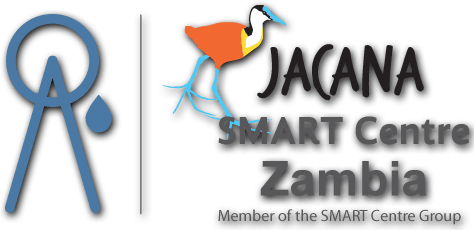SMART Water resources
Manuals are developed in cooperation with other members of the SMART Center group.
SMART = Simple Market based Affordable Repairable Technologies
Jacana develops resources like training materials, guidelines and tools. If you are interested in one of these resources, simply fill your name and email address and we will send them to you for free. For this reason, we need your contact details. Please read our Privacy policy.
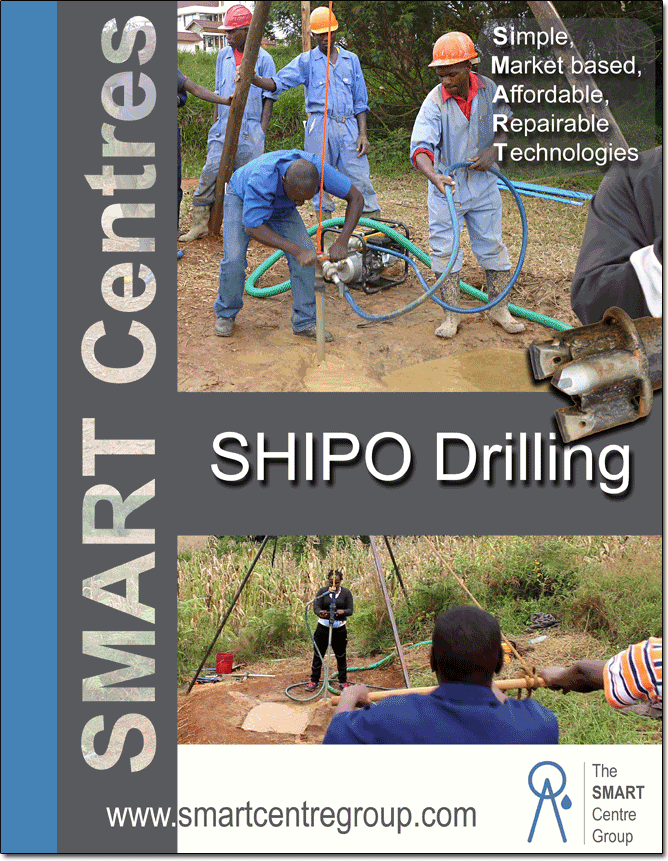
I want the manual Shipo borehole drilling
The SHIPO drilling combines sludging, percussion and jetting. It includes aspects of Rotary jetting and of the Baptist drilling technique.
The SHIPO drill method can drill in non consolidated deposits of sand and clay, small gravel and weathered rock, also hard layers can now be drilled with new drill bits with tungsten tips. For gravel or stones from 1 to 3 cm an open bit can be used combined with sludging by hand.
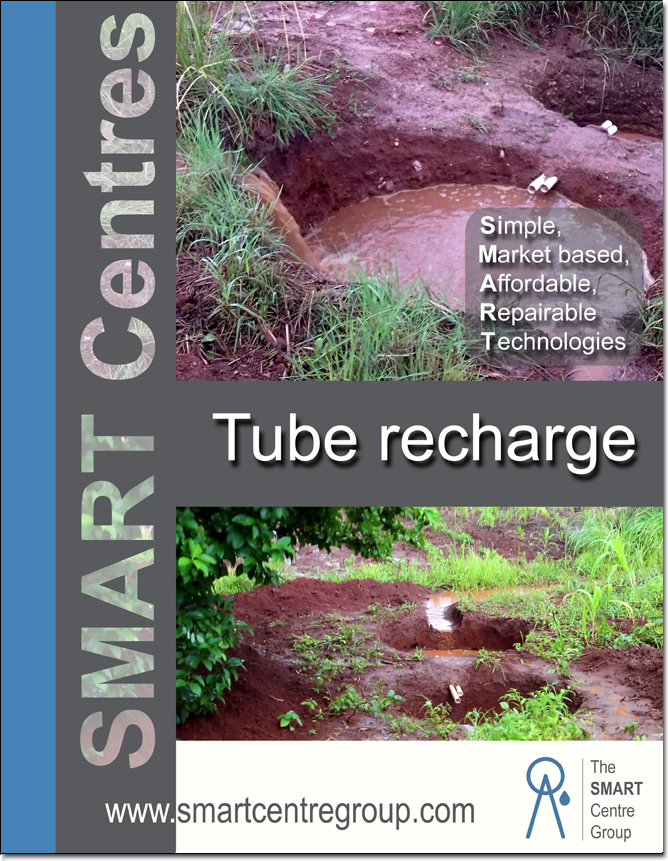
Interested in Ground Water Recharge
Many hand dug wells dry up at the end of the dry season, because more water is taken out than is coming in by the natural recharge. Reasons of limited groundwater recharge are heavy rainfall in short time, (climate change) compact topsoil layers, erosion because of loss of vegetation, etc. Options to increase the recharge of ground water are above or underground dams, the planting of trees and plants such as vetiver grass, making contour canals etc. An other option is the so called “Tube recharge”. This low-cost option combines a manually drilled hole with a drainage tube, a filter and a small pond. Rainwater, that otherwise would run off to rivers or evaporate, thus penetrates into the ground and reaches the first aquifer.
Download the free manual from MetaMeta at www.metameta.nl/publications
Also visit:
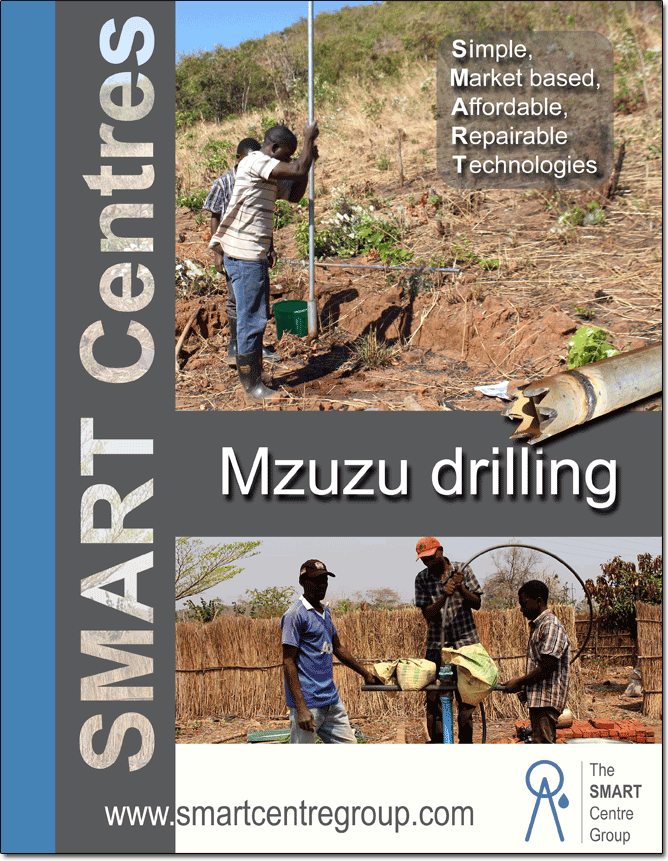
Want more on Mzuzu borehole drilling
Does your hand dug well run dry? Is the wall of your well unstable and dangerous for someone to dig deeper? Often the bottom of your well is than sandy. In that case the Mzuzu drill can help. Learn how it is done.
It is advisable to add a simple ground water recharge system to increase your ground water level. Learn how with the help of SMART Centre Zambia.
Also learn how to make a Mzuzu drill set, recharge your groundwater level, make pumps and install them with other resources on this page.
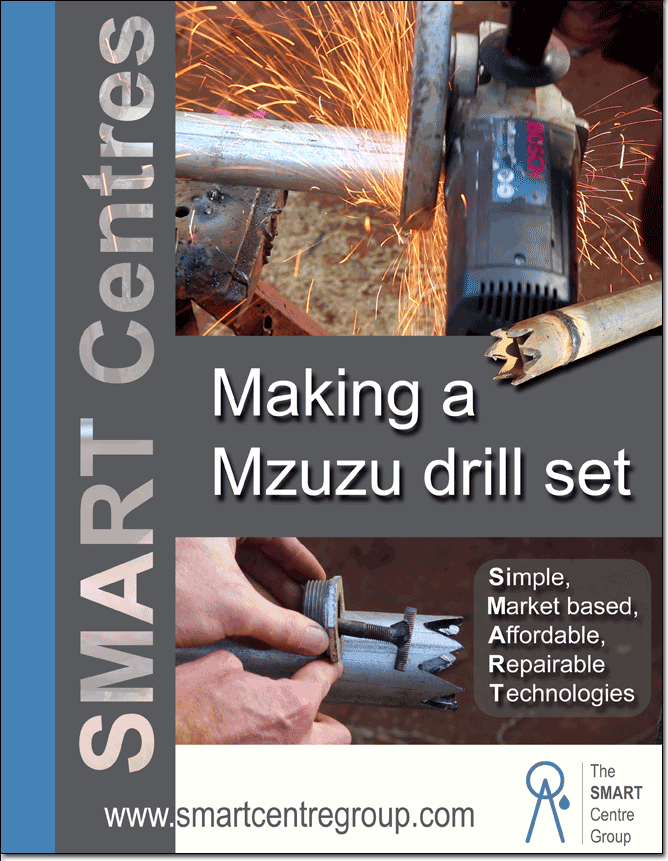
Want more on making a Mzuzu drill set
Mzuzu drilling can be used for deepening an existing hand dug well or making a new “borehole”.
Mzuzu drilling is one of the most affordable methods but not suitable for all conditions.
Many hand dug wells are drying up (due to climate change). Digging deeper is often dangerous, especial when the well wall is unstable and is collapsing. In these cases the soil condition is often ideal for Mzuzu drilling. Let us help you find out if this method could work in your area.
Learn how to use the Mzuzu drill below.
Moses Super Slim Solar pump
All part are worldwide available in common hardware shops and shops that sell car parts. Cost about $100 including solar panel.
The pump is ideal for very narrow tube wells, starting at 2″ (50mm) casing and bigger. Suitable for wells that produce very little water because it pumps slowly but steady. After 5½ hours an overhead tank of 1000 liter is full.
Moses Banda is trained and guided by Jacana SMART Centre Zambia.
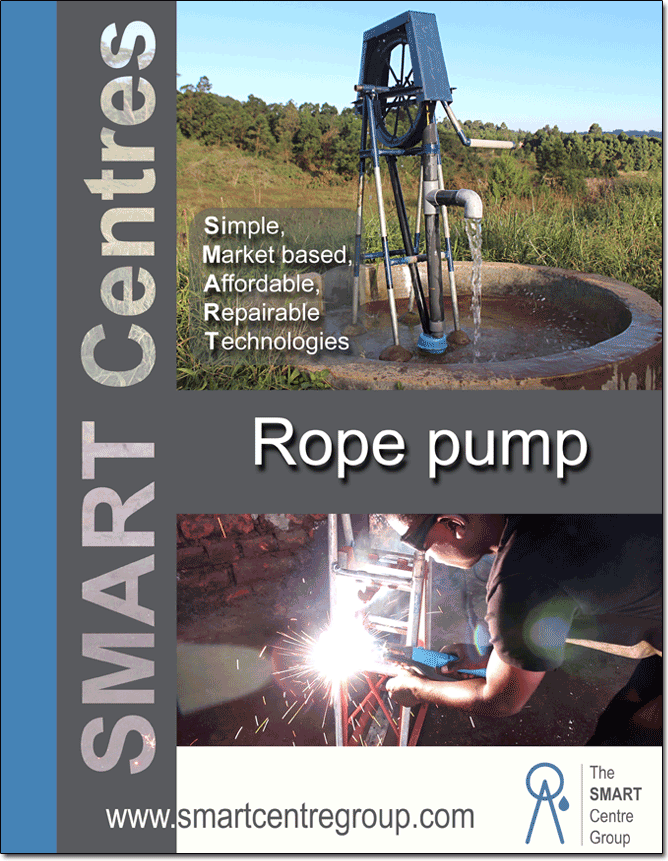
Interested in manual Rope pump
A rope pump consists of a wheel and an endless rope with pistons made out of rubber from a car tire or High Density PE. The pistons are attached to the rope at intervals of a meter and fit with a clearance of 1 millimetre in the pump pipe (also called raising main). The rope and pistons are moved by a handle with a wheel and go down to the bottom of the well where they enter in the PVC pump pipe via a guidebox. Between the pistons water is now lifted to the surface and leaves via the horizontal outlet pipe which has a bigger diameter than the pump pipe. The wheel and handle are mounted on a structure on top of the well or borehole. Rope pumps can be used on hand dug wells of 3 meters or more to boreholes with diameter of 2 inches or more. The yield and diameter of the water pump pipe depends on the depth of the well:
- 70 litre/minute with pump pipe 1¼” for water levels to 5 meters
- until 9 litre/minute with pump pipe ½” until water levels up to 35 meters and variations in between.
The name A model is because of the pump’s structure is in the shape of the letter ‘A’. This manual gives you details how to produce this model.
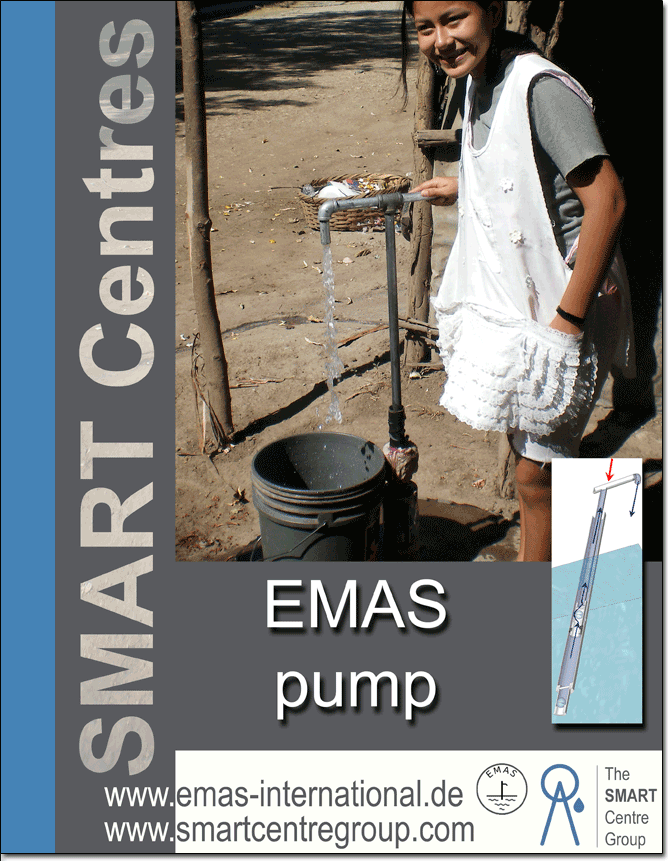
Interested in manual EMAS pump
The EMAS water pump I can be made from different sizes of PVC pipes and a marble. Compared to a rope pump, the EMAS pump produces water under pressure. So you can pump up water to a higher lever then where the pump is. EMAS pumps are also cheaper and easier to make. Yields are however in general less the a rope pump.
There is a ton of useful information and instruction videos at www.emas-international.de also about other low cost technologies. We advise to have a look.
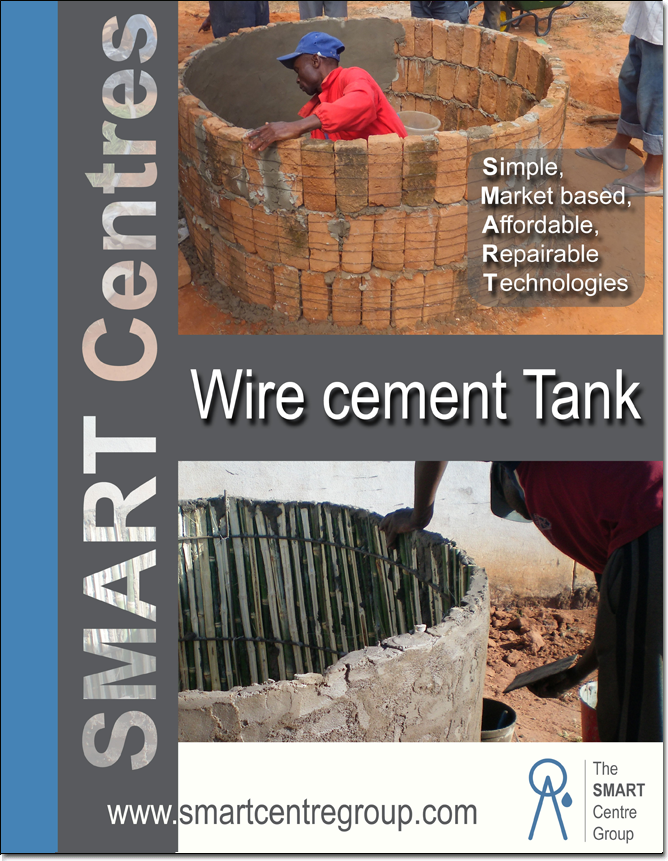
Interested in Wire Cement Tank
A water reservoir can store rainwater for domestic use or for irrigating a vegetable garden. This manual describes how to make inexpensive cement storage tanks like straw or bamboo mat tank and
brick tanks. A small amount of cement is needed. The walls are reinforced with steel wire. The tank can be placed under a roof to collect rainwater or just beside a well with a pump to store irrigation water.
It is advisable to add a simple ground water recharge overflow pipe to store over capacity of water in the ground, ready to pump it up later.
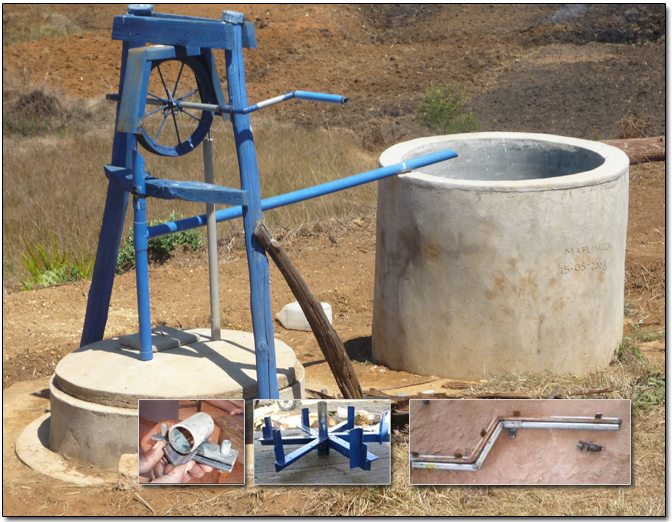
Interested in Windlass Rope pump
Windlass-model rope pump is mounted on poles next to the borehole or hand dug well. The windlass-model is normally used as a family or farm pump and not as a community pump. The windlass-model is much cheaper than the A-model. The yield and diameter of the pump pipe depends on the depth of the well (but are the same as the A-model):
- 70 litre/minute with pump pipe 1¼” for water levels to 5 meters
- until 9 litre/minute with pump pipe ½” until water levels up to 35 meters and variations in between.
This manual gives you all the details how to produce these kind of models.
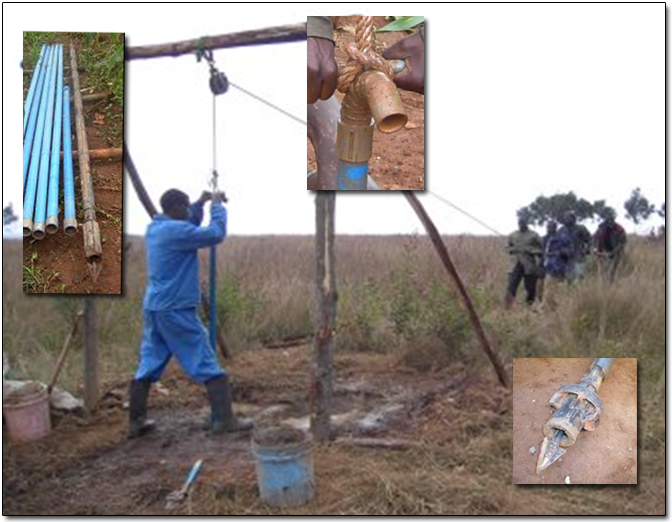
Interested in manual Baptist drilling
Baptist drilling is one of the manual drilling techniques. It is named after the Baptist Missionary, Mr Terry Waller who invented the technique.
This method is limited to non cemented, sedimentary deposits of sand and clay and will not drill through solid bed rock. Some soft rock can be drilled slowly. For gravel or stones from 1 to 3 cm an open bit can be used combined with sludging. A mayor difference compared to other techniques as the Rota Sludge is that this technique uses 1 ¼” PVC pipes on top of the lower steel drill pipe. Therefore this option is very light and can drill down to 100 meters deep.
See also www.waterforallinternational.org. This technique uses a sharp drill bit to loosen the soil and drilling liquid to lift the particles.
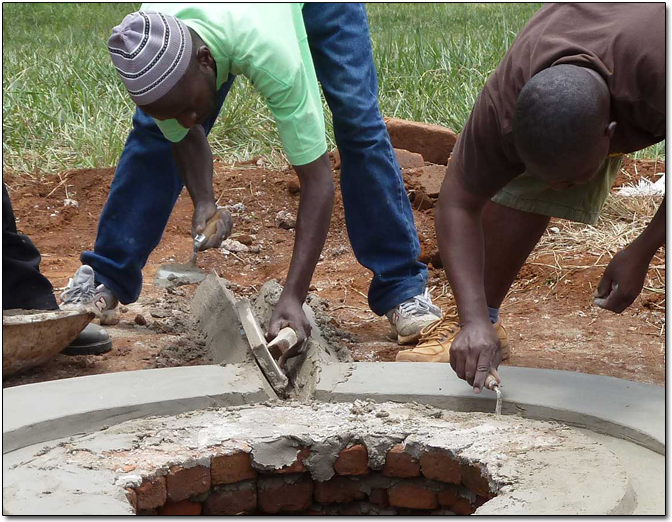
Interested in manual Finalization Well
This manual will tell you how to continue and how to finalize the well. This manual describes:
- Construction of the apron, cover and soak pit;
- Installation of the rope pump;
- Disinfection of the well water.
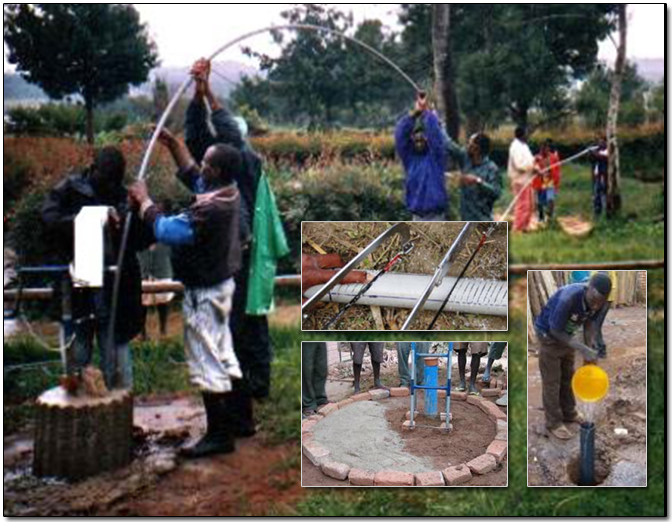
Interested in manual Finalization Borehole
This manual will tell you how to continue and how to finalize are borehole. This manual describes:
- Construction of the apron, cover and soak pit;
- Installation of the rope pump;
- Disinfection of the well water.
Let us help you more
Jacana likes to thank all donors who made it possible to provide these manual free of charge.

